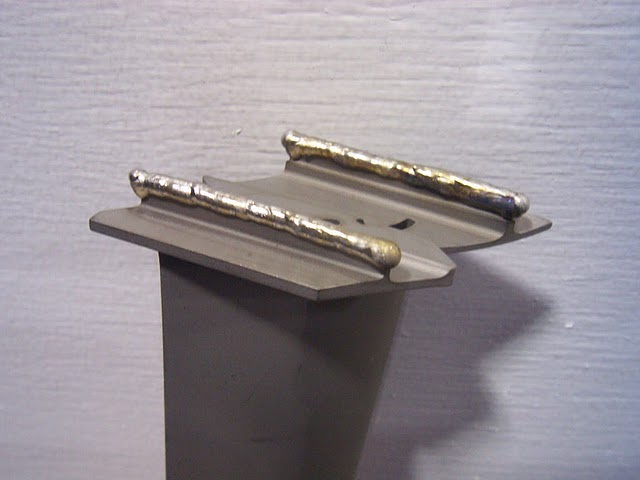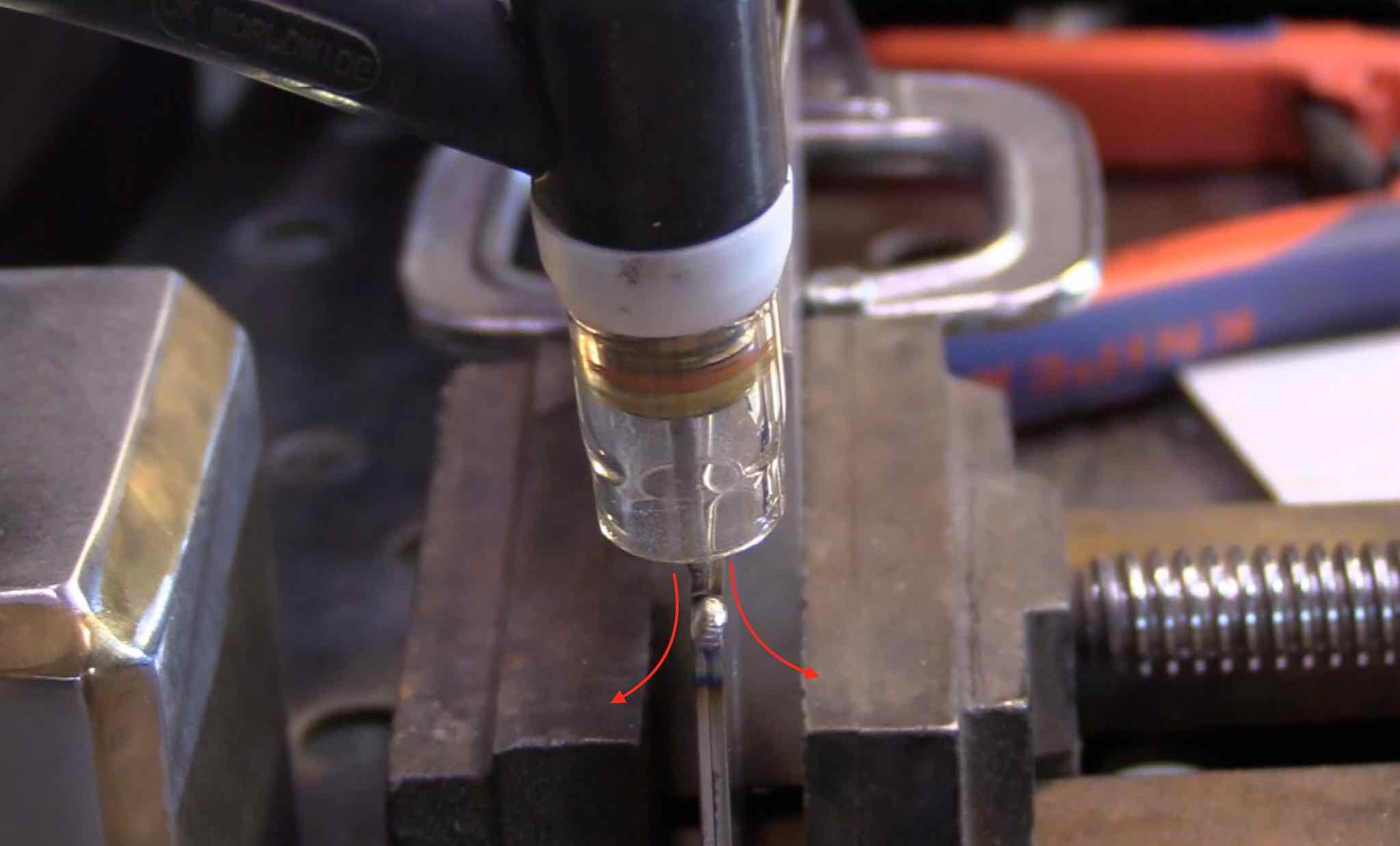TIG welding Edge welds - edge joints, and build-up
visit my store to learn more about the tig cups used in this video
Edge welds and joints are not seen as much as the common corner, lap, butt, and tee joints.
But in the aerospace repair world, edge welds and build up is very common.
like
these air seals on base of this nickel alloy vane where 2 or 3 beads
are welded to a seal that is only about .025” or .030” thick…then they
are ground on a machine to original thickness and height as part of the
repair overhaul process.
real world application for edge welds

For this weekly video, lets do some edge welding and talk about gas shielding, amperage, and how chill blocks can help with gas shielding and discoloration.
On stainless steel sheet metal, sometimes its ok to fuse without filler on an edge joint. and other times filler metal should be used.
It really just depends on the application.
for example, on stainless steel kitchen tables for food service, surface finish is one of the main considerations and its pretty common for tig welds to be made without filler metal.
here are a few tips for amperage when welding on an edge.
for an edge weld on carbon steel up to .125” , the amperage needed for an edge build up bead is roughly half of the thickness (depending on filler rod size) so .125" thickness or 2 pieces of .062” joined, only needs around 62 amps.
for stainless steel edge welds, much less amperage is needed.
in this video, I am using .050” thick stainless so joined together that equals .100”
yet for fusing without filler metal, only 38 amps was needed…and with filler metal, only around 41 amps was needed ( about 10% more amps than without filler).
if you have never welded a bead on an edge before, start with something around .125” and work you way down as thin as you dare.
with practice, its possible to go as thin as .020" (.5mm)
and for tig welding something that thin, a very small electrode around .040" (1mm) would be advised.
Since tig welding a bead on an edge tends to split the flow of argon shielding gas, it really makes sense to use chill bars to trap argon as well as provide a heat sink.

You can’t always use chill bars in every situation, but where you can , its not cheating, its just being smart.
On the chance that you are thinking about a career in aerospace welding, here is a piece of advice for simple practical training...
get yourself some inconel or stainless .032” thick and practice making edge beads until you can do it consistently.
Start out thicker if you need to and work down to .032"
this is some of the
best practice there is for the type of welding repair done on turbine
blades and vanes found in aircraft engines that are routinely repaired
by airlines and maintenance facilities like chromalloy, heico, GE, CRT
and numerous others.













